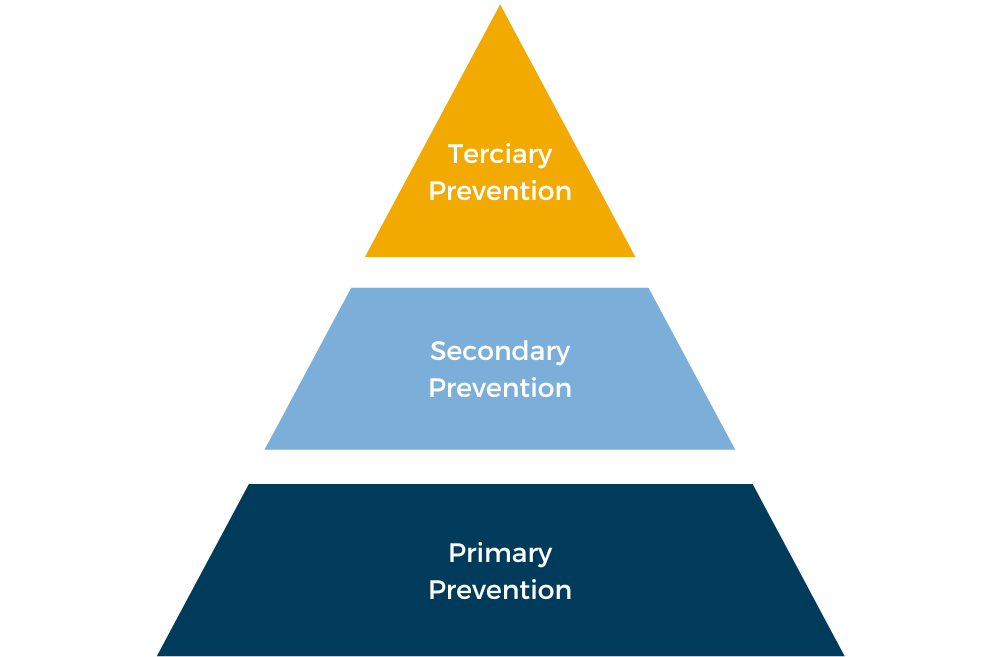In medicine, prevention is the measures taken to reduce the chances of developing an illness, like getting vaccinated. In cancer, prevention is the best way to reduce the chances of having cancer, and if you have it, it is the best way to detect it in its early stages, thus leading to a higher survival rate.
There are different levels of prevention:
Primary prevention
This involves a set of activities that are carried out by both governments and health personnel before a certain disease appears. It comprises:
Health promotion, which is the promotion and defense of the population’s health through actions that affect the individuals of a community, such as anti-smoking campaigns to prevent lung cancer and other diseases associated with tobacco and vaccination campaigns.
It also entails the specific protection of health such as environmental health and food hygiene. Health promotion and protection activities that affect the environment are not carried out by medical or nursing personnel, but by other public health professionals.
Secondary prevention
This level is also called early diagnosis or screening. An early detection program is an epidemiological program of systematic or universal application for detecting diseases in a determined and asymptomatic population, a serious disease in the initial or early phase, with the aim of reducing the mortality rate and it may be associated with effective or curative treatment.
Secondary prevention is based on population screening and in order to apply these measures, the following predetermined conditions must be met, defined in 1975 by Frame and Carslon to justify the screening of a pathology:
- The disease represents an important health problem with a marked effect on the quality and length of life.
- The disease has a prolonged asymptomatic initial stage, and its natural history is known.
- An effective treatment is available and accepted by the population in the event that the disease is found in its initial stage.
- There is a rapid, safe, easy-to-perform screening test, with high sensitivity, specificity, high positive predictive value, and well accepted by doctors and patients.
- The screening test has a good cost-effectiveness ratio.
- Early detection of the disease and its treatment in the asymptomatic period reduce overall morbidity and mortality.
Tertiary prevention
This is the restoration of health once the disease has appeared. It involves applying a treatment to try to cure or alleviate a disease or certain symptoms. The restoration of health is carried out both in primary care and in hospital care.



